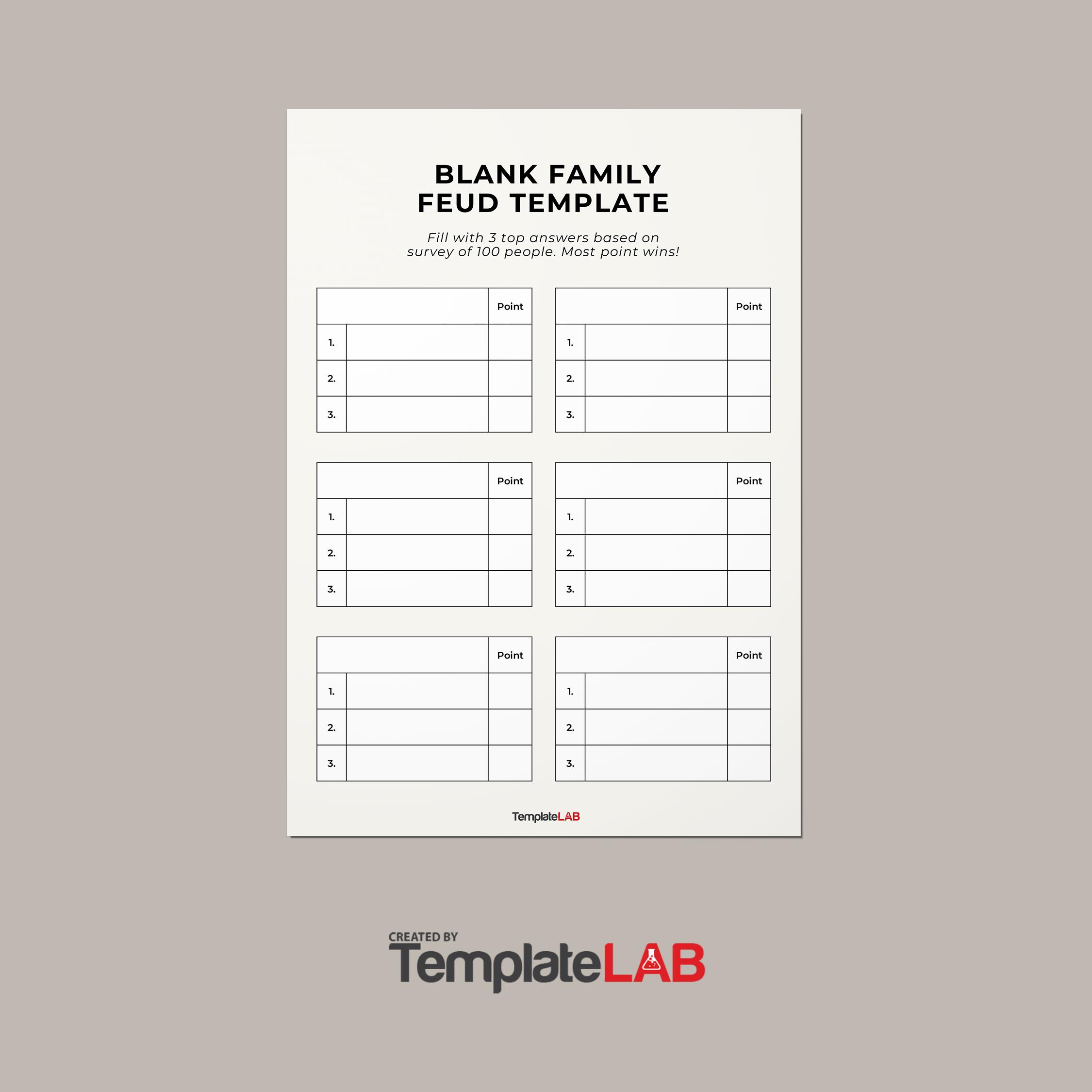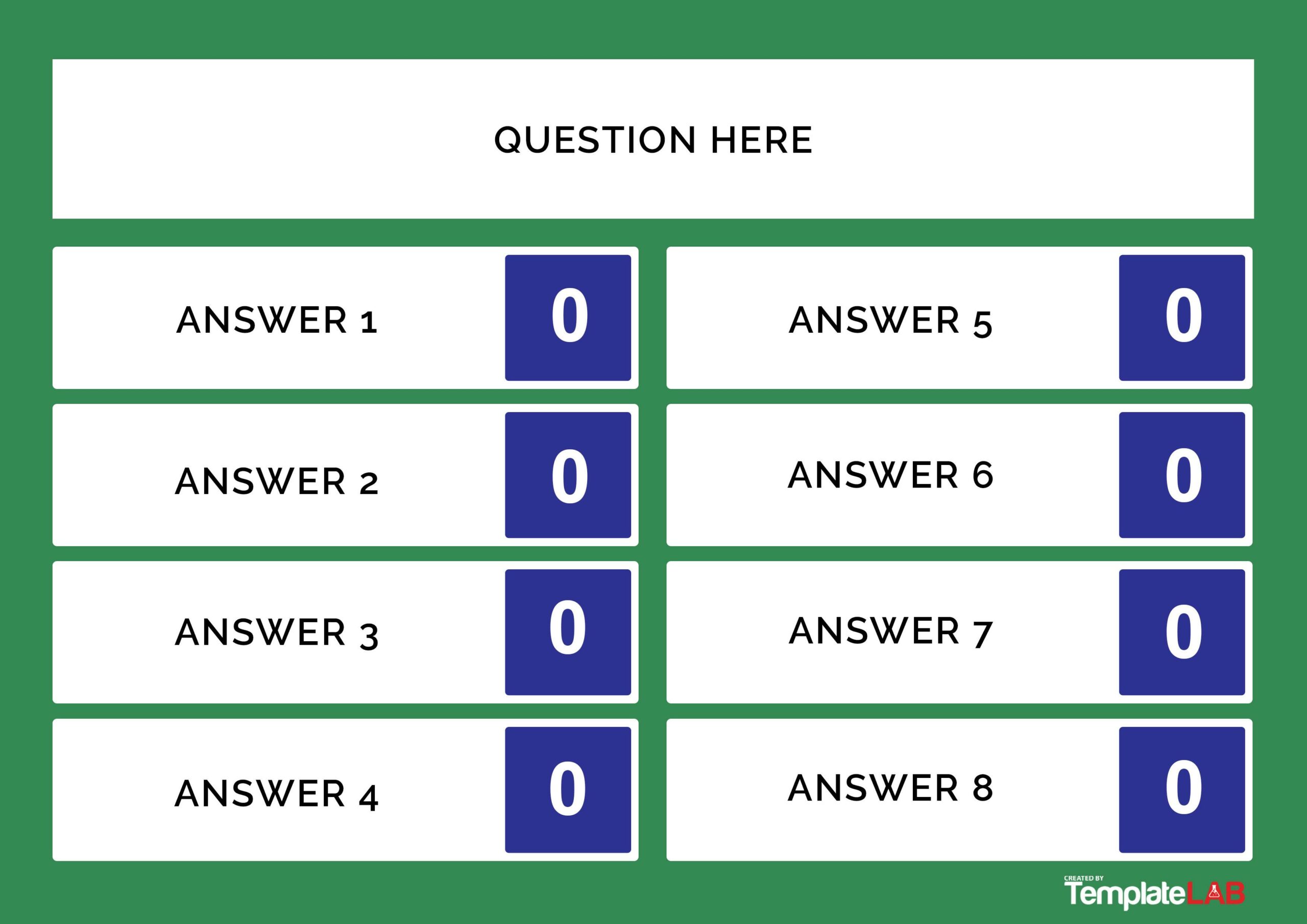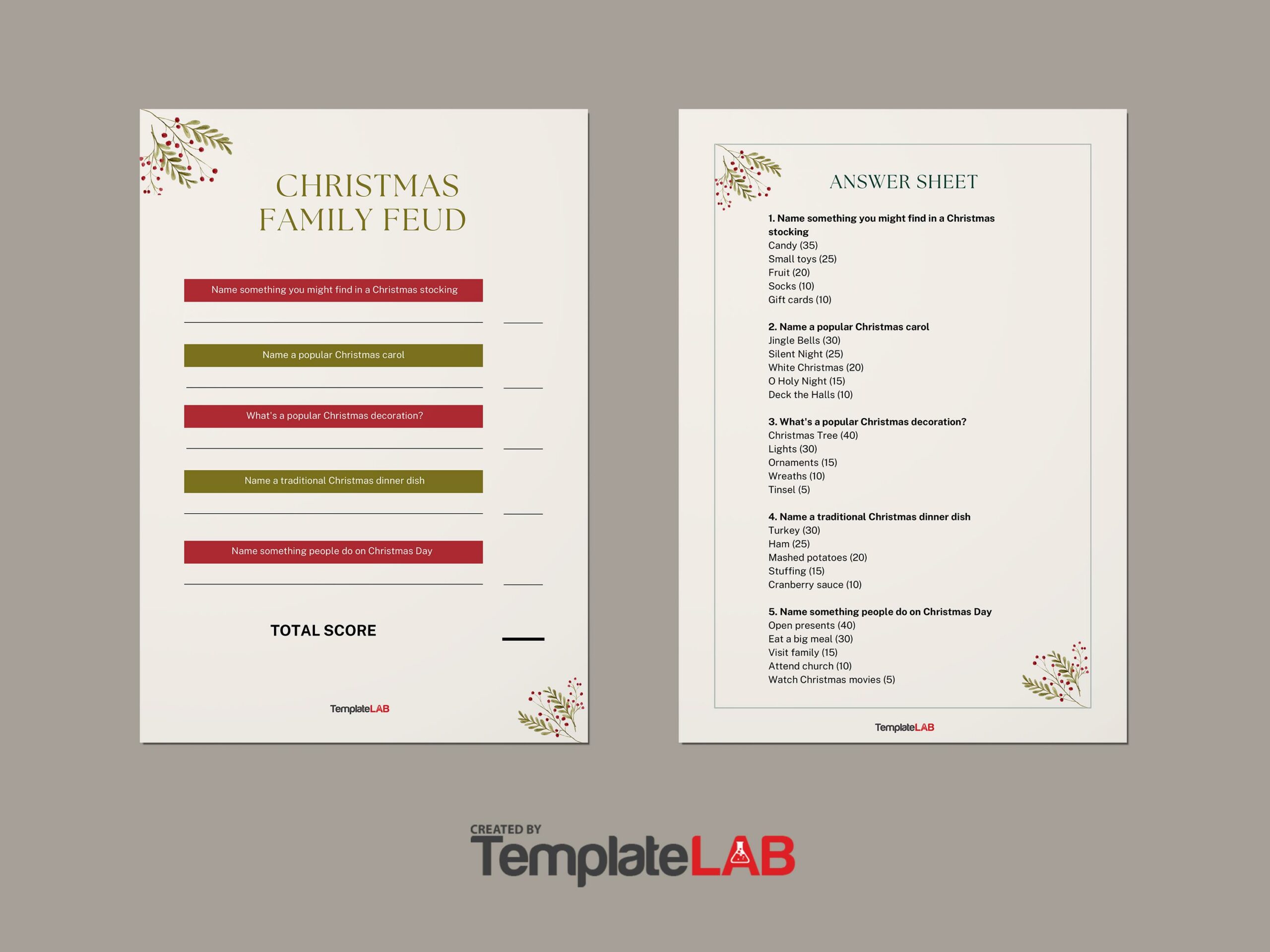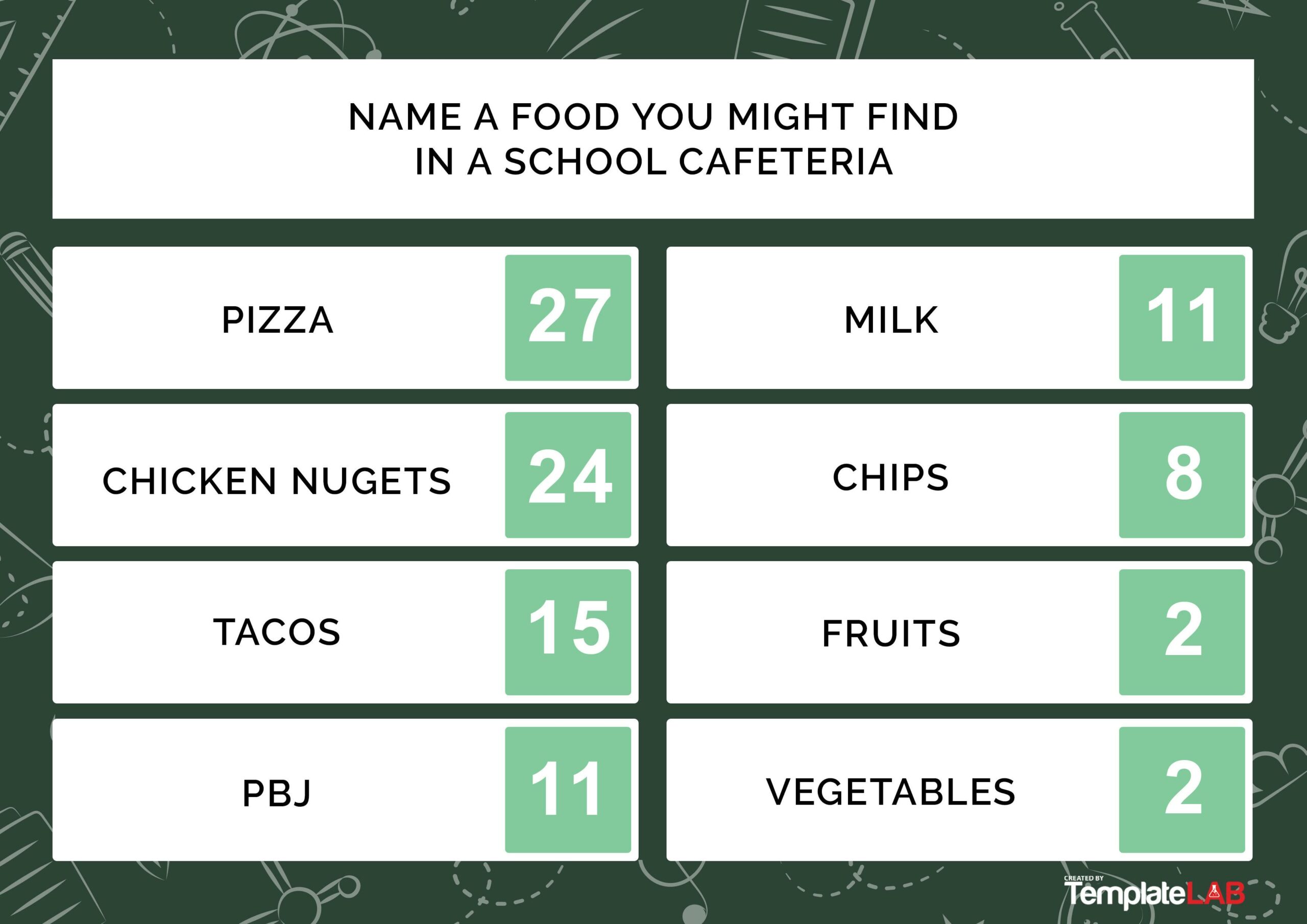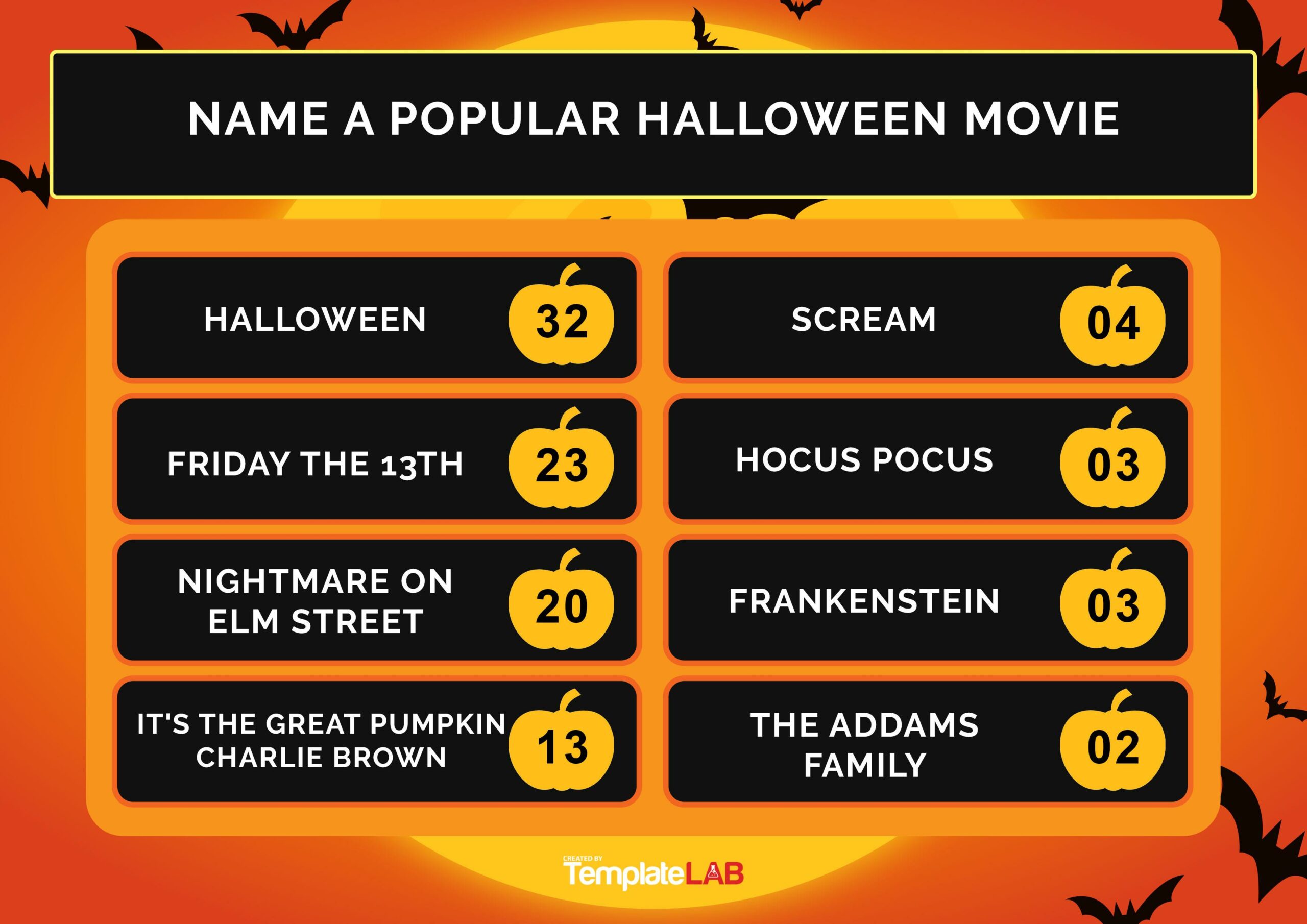The families in the US and the UK name “Family Feud” as one of their all-time favorite game shows. It has also been ranked third most popular show on the list of all-time great TV shows. Almost all game-watchers know that famous catch-phrase “Survey says…” and the familiar buzzer sound that follows. The show can be very informative but amusingly, can also be extremely hilarious too, because of the unexpected answers given by the contestants. So why not play this game at home using a family feud template?
Table of Contents
Family Feud Templates
What is Family Feud?
Since its launching, the “Feud” has gone through many changes, from different emcees to cancellations, revivals, and the move to syndication. But it has proven itself to be very resilient and in due course, has developed loyal followers. It still continues to this day bringing new fans for every season it’s aired.
One great thing about this show is that the game itself hasn’t changed much, since its inception in the 1970s. True, there may have been some tweaks and a few modifications in the past years but despite these, Family Feud is still one of the most instantly recognizable shows on TV.
Custom Family Feud
How to play Family Feud?
Before you make your own family feud using a family feud template, let’s learn more about how to play the game. The game starts with one member of each team stepping up to the podium to face-off with each other on the very first question. The player who presses the buzzer first wins the right to give their answer.
Should the contestant provide the very first survey answer, his family takes control over the question. Otherwise, the other contestant will try to give a response which ranks higher to gain control for the team. The family who gets control will then be providing responses one by one.
They aren’t allowed to talk to each other during this point in time. If they provide an answer that’s not part of the board, the family receives a strike. If the family provides all the correct answers before getting to strike three, they win that round.
However, if they get three strikes, the control passes to the other team who, in turn, get only one chance to figure out the remaining answers so that they can win that round. They can consult among themselves to come up with their response. If they don’t give a correct answer, the first team gets all of the points.
There are usually four rounds for each game to include on your family feud game template. But if there’s still time left, the players can have two more rounds. These are the “lightning” or ” sudden death” rounds. Other parts of the game to include in your family feud maker are:
- Fast Money Round
The family who garners most points by the end of all the rounds has the chance to move to this round. Here, two members of the winning team will play. One remains with the host and the other goes backstage.
The first player gets 20 seconds to provide answers to five questions with the scores of each based on the number of people who gave the same answer. After the first player finishes, they see his scores along with the total on the display board.
These results are then covered up as the second member comes back out. The second player receives the same questions but the time allotted gets increased to 25 seconds. Should the second player repeat the answer given by the first for each question, the player hears a buzz.
In such a case, the player has to provide another answer. The total scores of both members should be equal to or over 200 for the family to win the grand prize. - Point Value
The basis of the point value for each answer is on the response of the people who answered the survey question. The most popular responses are the only ones that get included on the board.
Often, because of this, the total points won’t always add up to 100. In the show’s current format, the round assigns one-point values for the first and second rounds, double point values for the third round, and triple point values for the fourth.
Family Feud Game Templates
Creating your own family feud template
If you love the show, what better way to pay tribute to it than to create your own “Family Feud” template. This will definitely be a hit in gatherings, especially if you create a great family feud PowerPoint presentation and involve everyone.
You have seen the show, so it shouldn’t be that difficult to make your own family feud in the comforts of your own abode. Follow these simple steps for your family feud game template:
- Part I: Gather Survey Data
Come up with a survey of your own
This could be a lot easier if you can gather a large group for your survey, such as employees in an office or a class in school. Make your questions as basic as you can so you can expect good numbers of similar answers. Questions, for instance, about favorite breakfast foods or favorite colors are okay. Subjective questions like favorite movies songs cause too many variations.
Consider using online surveys
When you cannot find a group big enough for your survey or if you’re not getting a good number of similar answers, go online and look for the most popular survey questions and answers.
Come up with your own master answer sheet as part of your family feud maker
The host should see the top five responses for every question in your game. - Part II: Set Up Your Game
Create your answer board
Use a chalkboard to write down the top five answers to each of the questions, followed how many responses those questions received. Of course, you need to cover these answers with strips of paper first. For a speedier game, try to fit in several rounds on your chalkboard. You can also use a family feud PowerPoint presentation for your game.
Make markers for each strike
As explained earlier, each team gets up to three strikes. This means you must have six markers for these strikes. These markers could be as simple as pieces of paper or if you are up to it, can come up with elaborate solutions like even colored light bulbs or bean bags.
Prepare a timer
You need this to set time limits for every question asked.
Give each team their own buzzer
The buzzer indicates to the host that someone from the team already thought of an answer. If it’s too complicated to install one, just using a plastic bag containing a few beans will be a cheap but effective alternative.
Choose teams
Traditionally, the game requires five members in each team. Assign one person to act as the host. He will be in charge of using the timer to keep track of the timings as well as revealing the correct answers. - Part III: Play the Game!
Reveal the first question
Now that you have your family feud template and the other elements of the game ready, it’s time to play! The host asks the first question. One player from each team tries to provide what they believe is the highest-ranking answer. The player who comes up with the most popular answer gets to choose if their team plays for the other answers or passes control on to the opposing team.
Once the team has come to a decision, the first round starts
The players of the team who have control of the game take turn giving answers. Consulting among team members isn’t allowed. For correct answers, the host reveals them on the chalkboard with the corresponding number of points.
Strikes for incorrect answers
Every time a team member gives an answer that isn’t on the board, the team receives a strike. Three strikes mean that the board hasn’t been fully revealed yet thus giving the other team an opportunity to get all of the points from that round. The team may consult with each other. If they guess any of the hidden answers, they win the round and all of the points.
Awarding of points
Points get awarded based on how many responses their answers received. For instance, if 20 people selected an answer to a particular question, then the team receives 20 points. At the end of all the rounds, the family who earned the most points wins.
Make it more fun!
To enhance the game and make people feel that they’re almost “there,” you can provide the theme music of Family Feud too. This would just be the “icing on the cake.” You can download the theme through YouTube.
Also, to make it more authentic, add the “ding” sound for correct answers and the “buzz” for wrong ones. There is an available app for that on Android and its free. The name of the app is “Game Show Host.” It features dozens of game show sound effects that you can use.
The buzzer and the ding sound are close enough. If you’re using an iOS device, the free “Gameshow Sound Board” can be a very useful tool for your game.

